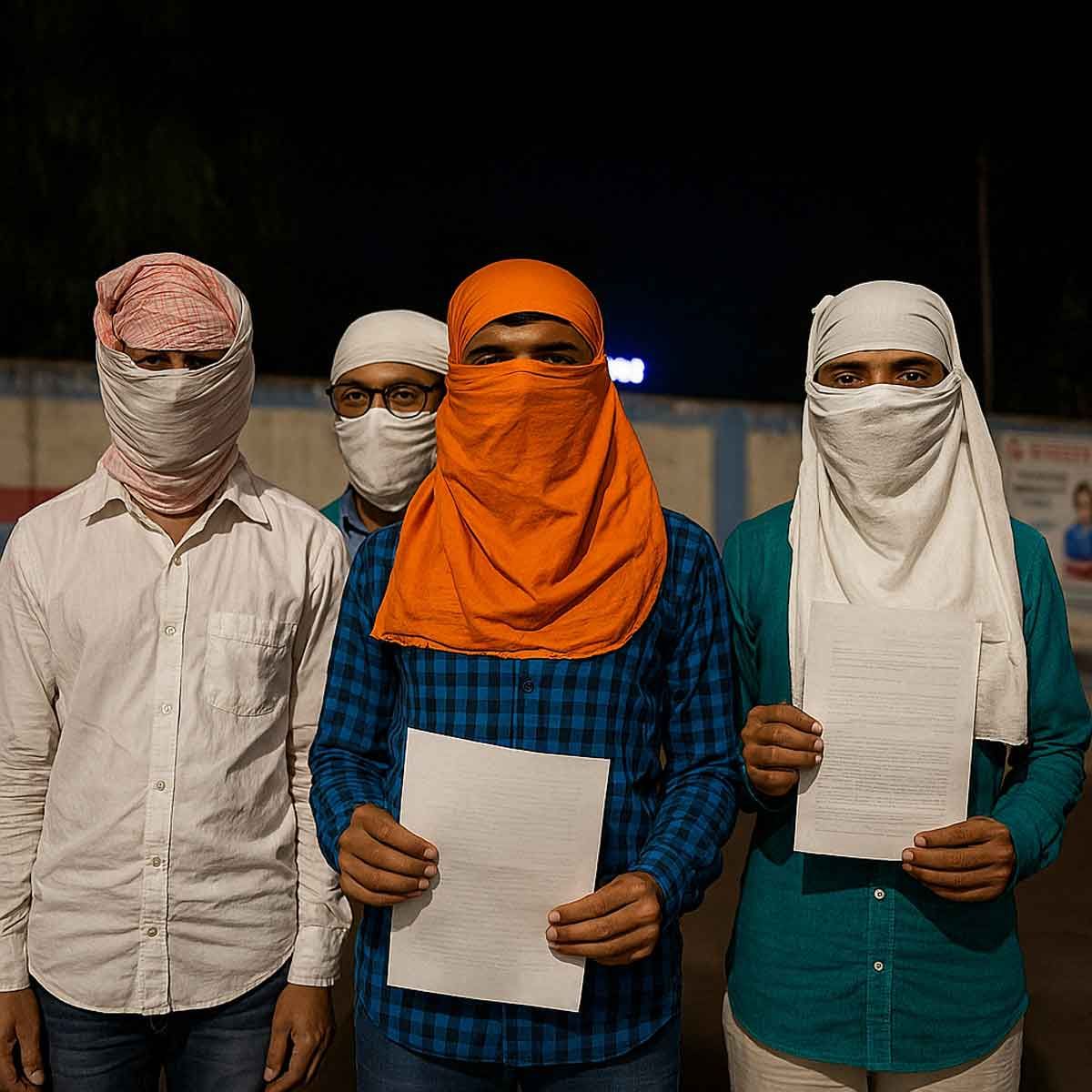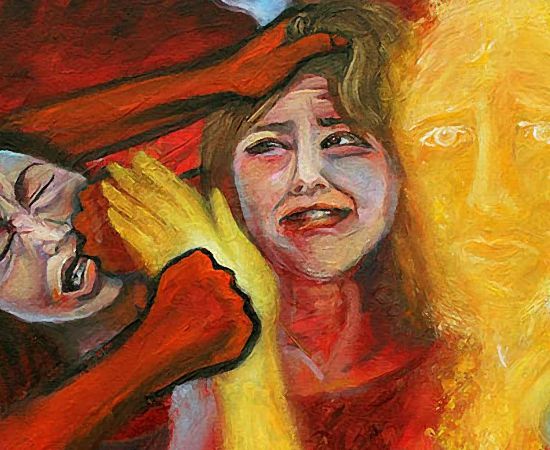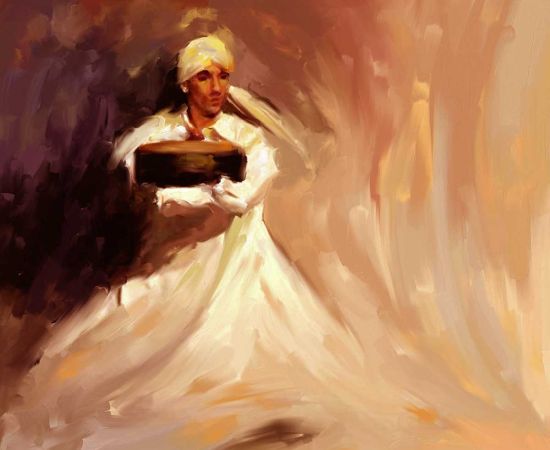More Coverage
Twitter Coverage
Satyaagrah
Written on
Satyaagrah
Written on
Satyaagrah
Written on
Satyaagrah
Written on
Satyaagrah
Written on
JOIN SATYAAGRAH SOCIAL MEDIA
"Zip it, Shh…": In a triumphant revelation, NMC logo illuminates India's medical legacy with Dhanwantari, silencing misguided critics and fake news peddlers, we boldly navigate the Ayurveda & modern medicine, rewriting the narrative with undeniable facts!

"Zip it": In a triumphant revelation, NMC logo illuminates India's medical legacy with Dhanwantari, silencing misguided critics, rejecting fake news, we boldly navigate the confluence of Ayurveda & modern medicine, rewriting the narrative with undeniable facts!
In a bold move, the National Medical Commission (NMC) has revamped its official logo, substituting "India" with "Bharat" and incorporating an image of Dhanwantari, the Hindu god associated with healing. While the alteration aimed at recognizing India's diverse medical heritage, a swarm of controversy has ensued, fueled largely by sensationalized narratives peddled by some liberal and leftist outlets.
 |
| NMC website home page featuring its new logo |
The NMC's decision, a nod to India's rich medical traditions, has unfortunately become a battleground for misinformation, with some media outlets exploiting the situation to propagate a divisive narrative. It is imperative to sift through the fog of misinformation and scrutinize the real motives behind the manufactured outrage.
The crux of the matter lies in the misuse of the term 'secular,' with liberal and leftist commentators suggesting that the inclusion of Dhanwantari somehow compromises the secular fabric of the medical profession. This conveniently overlooks the historical roots of various medical traditions in India, including Ayurveda, which is an integral part of the country's diverse medical landscape.
The NMC's decision to embrace this diversity is not an endorsement of any particular religious ideology but a recognition of the multifaceted nature of medical practices in the country. Yet, some liberal and leftist outlets have seized upon this opportunity to fuel a narrative that portrays the NMC as an institution succumbing to alleged right-wing pressures.
Critics have taken to social media platforms, employing hyperbole and selective outrage to further their agenda. The modified logo, now displayed proudly on the NMC's website, has been subject to misinterpretation and deliberate distortion. It is crucial to separate genuine concerns about the role of the NMC from the manufactured outrage propagated by certain media outlets with a clear bias.
|
One notable example is a social media post where a user, presumably aligned with liberal ideologies, expressed dismay, stating, "What's more saddening is NMC's logo will now feature Dhanvantari, the Ayurveda founder, a kind of alternative medicine pic in its logo for Modern medicine in India." This statement, while attempting to spark controversy, conveniently ignores the rich tapestry of medical practices coexisting within the Indian healthcare system.
In the face of such misinformation, it is imperative to reaffirm the NMC's commitment to a holistic representation of India's medical traditions. The commission's decision is not a departure from modern medicine but an inclusive recognition of the various streams that contribute to the nation's health.
The National Medical Commission (NMC) recently unveiled a modified logo, incorporating the term "Bharat" and featuring an image of Dhanwantari, the Hindu god associated with healing and medicine. Unfortunately, what should have been a celebration of India's diverse medical heritage has been marred by a controversy fueled by sensationalism and misleading narratives, particularly from some segments of the media.
The alteration in the NMC's logo, a symbolic acknowledgment of India's rich medical traditions, has unfortunately become a battleground for misinformation, with some media outlets exploiting the situation to propagate a divisive narrative. It is crucial to scrutinize the real motives behind the manufactured outrage and discern the genuine concerns from the sensationalized rhetoric.
The crux of the matter lies in the misuse of the term 'secular,' with certain individuals and media outlets suggesting that the inclusion of Dhanwantari somehow compromises the secular fabric of the medical profession. This conveniently overlooks the historical roots of various medical traditions in India, including Ayurveda, which is an integral part of the country's diverse medical landscape.
Some netizens have taken to social media platforms, employing hyperbole and selective outrage to further their agenda. The modified logo, now displayed proudly on the NMC's website, has been subject to misinterpretation and deliberate distortion. It is crucial to separate genuine concerns about the role of the NMC from the manufactured outrage propagated by certain media outlets with a clear bias.
|
Another misleading narrative has emerged, accusing the NMC of regressing modern medicine by replacing its previous Ashoka emblem with an image of Dhanvantari. One user went to the extent of stating, “NMC (National Medical Commission of India) has changed its logo replacing its previous Ashoka emblem to Dhanvantari, known as Physician of Devas, An avatar of Vishnu, God of Ayurveda. Congrats to NMC for taking our modern medicine to 1000 years backwards and taking us back to old dark ages of religious pseudoscience.”
This narrative not only oversimplifies the NMC's decision but also misrepresents the intent behind incorporating Dhanwantari's image. The move is not a rejection of modern medicine but a holistic acknowledgment of the various medical streams that have contributed to India's healthcare landscape over centuries.
The National Medical Commission's (NMC) recent logo modification, incorporating the term "Bharat" and featuring an image of Dhanwantari, has generated mixed reactions. While some express concerns about the perceived religious association, it is crucial to navigate through the sea of misinformation peddled by certain individuals and media outlets.
|
One user expressed their disapproval, stating, "NMC cannot be religious! Being a Doctor is beyond any religion. This logo is not acceptable!" This sentiment, while reflecting concerns about the secular nature of the medical profession, may be based on a misunderstanding of the NMC's intent. The incorporation of Dhanwantari's image is not an attempt to impose religiosity on the medical field but rather a nod to India's diverse medical heritage.
|
Another user found NMC's updated logo "highly objectionable" and accused the BJP of introducing Hindutva in medicine. "New logo of NMC is highly objectionable. BJP Govt. trying to introduce Hindutva in medical education which entirely defeats the scientific and evidence-based approach of modern medicine," the user claimed. This statement illustrates the danger of intertwining political narratives with healthcare decisions, potentially distorting the reality of the NMC's emblem update. It is essential to discern between genuine concerns and politicized allegations.
|
Dr. Sumeet Shah voiced disapproval, stating, "This is in bad taste. Should be reversed immediately @NMC_IND I don’t support the use of any kind of religious symbols on the logo of scientific or national organizations which represent the country & all communities." While Dr. Shah's concern is valid, it is crucial to understand that the intent behind the logo modification is not to promote religious affiliations but to acknowledge the historical roots of various medical traditions in India.
|
Another critic claimed, "The National Medical Commission of India, the apex 'scientific' body that regulates medical education and medical professionals has silently dropped the Ashoka State Emblem from its logo, replacing it with an image of the Hindu God Dhanvantri. Shame on NMC to change the logo – Let's not mix science with religion." This statement misrepresents the situation by overlooking the inclusive nature of the NMC's decision. The alteration is not a rejection of science but a recognition of the coexistence of various medical traditions within the country.
|
Despite the criticisms, a positive response emerged from Ayurvedic doctors and a section of netizens. One user extended congratulations to NMC, stating, "Heartiest congratulations @NMC_IND using Dhanvantari and Bharat in the logo. Another step to part away from colonial mindset. This not Hinduism but respecting and being proud of culture, Indian knowledge system @IMAIndiaOrg should appreciate." This viewpoint highlights the need to appreciate the emblem change as a step towards recognizing and celebrating India's rich medical heritage.
|
The National Medical Commission's (NMC) recent decision to update its logo has garnered diverse reactions, with some expressing enthusiasm for what they see as a historic step towards embracing India's rich medical heritage. One such supporter, Abhishek Garg, commended the move, stating, "Historic step by @NMC_IND by incorporating updating their logo. This is Bharat, going back to its roots. Medicine and medical education have a long history. Dhanvantari symbolizes medical history dating back to the time of Samudra Manthan. यह हमारा भारत है।" Garg's perspective underscores the importance of recognizing and celebrating the historical depth of India's medical traditions.
 |
| Kerala IMA letter to NMC chairman |
However, amidst the positive response, there are voices of dissent, particularly exemplified by the Kerala chapter of the Indian Medical Association (IMA). In a letter to the NMC, they expressed that the new logo is "unacceptable to the medical fraternity." The association argues that the logo sends the wrong message, asserting that it will harm the scientific and secular nature of the Commission. The letter further states, "Members of the profession have already raised their voice against this unacceptable move, and we strongly condemn the decision and demand immediate action." It's essential to critically examine these concerns, ensuring that they are based on a nuanced understanding of the NMC's intent.
The contrasting viewpoints highlight the challenge faced by institutions like the NMC in navigating through differing perspectives within the medical community. While some, like Abhishek Garg, view the logo update as a positive acknowledgment of India's medical history, others, like the Kerala chapter of the IMA, perceive it as a deviation from the scientific and secular principles they believe should guide the NMC.
It is crucial to distinguish between genuine concerns raised by medical professionals and the potential exploitation of the situation by those with vested interests. The letter from the Kerala chapter of the IMA reflects a strong condemnation of the NMC's decision, asserting that it gives the wrong message and undermines the scientific and secular nature of the Commission. However, it is essential to scrutinize whether these concerns are rooted in a comprehensive understanding of the historical context or if they are influenced by sensationalized narratives.
Kerala IMA's Misleading Critique: Unveiling the Facts Behind NMC's Logo Update
Amidst expressions of dismay from a section of doctors and social media users over the inclusion of the Hindu deity Dhanwantari in the National Medical Commission's (NMC) updated logo, it is crucial to note that the previous emblem also featured an image of Dhanwantari, albeit in black and white. The recent modification entails a slight enlargement and a more colorful depiction of the deity. This context is essential to provide a factual foundation and debunk any misplaced criticism surrounding the NMC's logo update.
However, the controversy surrounding the logo takes an unfortunate turn with the involvement of controversial liver specialist Dr. Abby Philips. Known for previous entanglements with defamation suits, his reentry into the mainstream news is marked by disparaging remarks about Ayurveda and Hindu gods, coupled with the dissemination of fake news. His approach to the NMC's logo update reflects a pattern of not only expressing dissent but also propagating misinformation, raising concerns about the credibility of his narrative.
The NMC's decision to modify its logo, substituting the word "India" with "Bharat" and introducing a colored image of Dhanwantari, the Hindu deity associated with healing and medicine, triggered a response from secular and left-liberal physicians, with Dr. Abby Philips leading the charge. The critical aspect here is not the expression of dissent but the potential distortion of facts and the spread of misinformation. In such instances, it becomes imperative to distinguish between genuine concerns and sensationalized narratives.
|
Dr. Abby Philips, in a post on X, claimed, "The National Medical Commission of India... silently dropped the Ashoka State Emblem from its logo, replacing it with an image of the Hindu God Dhanvantri, the embodiment of pseudoscientific Ayurveda, thus signaling the shameless entry of India into the inner circle of pseudoscience Hell." These claims, however, were swiftly refuted by BN Gangadhar, the officiating chairman of the NMC, who clarified that the image of Dhanwantari was already present in the logo, depicted as a black-and-white line diagram. The decision to add color to the image was unanimous among NMC members for practical printing purposes. This discrepancy between Philips' claims and the official response further underscores the importance of fact-checking and holding individuals accountable for misinformation.
Dr. Abby Philips, a controversial figure with a history of legal entanglements, recently resurfaced in mainstream news with disparaging remarks about Ayurveda and Hindu gods, coupled with the dissemination of misleading information regarding the National Medical Commission's (NMC) logo update. Philips shared an X post stating, “The National Medical Commission of India... has silently dropped the Ashoka State Emblem from its logo, replacing it with an image of the Hindu God Dhanvantri, the embodiment of pseudoscientific Ayurveda, thus signaling the shameless entry of India into the inner circle of pseudoscience Hell." This statement not only misrepresents the NMC's decision but also perpetuates a narrative that is both divisive and based on misinformation.
|
Dr. Abby Philips specifically asserted that the 4-lion Ashoka Emblem was dropped from the NMC's logo and replaced with that of Dhanwantari. However, BN Gangadhar, the officiating chairman of the NMC, refuted these claims when interviewed by Hindustan Times. Gangadhar emphasized, "There is nothing to sensationalize here as nothing has been significantly changed." He clarified that the image of Dhanwantari was already present in the logo, represented as a black-and-white line diagram. The decision to add color to the image was unanimously agreed upon by NMC members for practical printing purposes. Gangadhar further shed light on the historical decision, stating, "When NMC was formed, it was decided then to use Dhanwantari’s image in the logo. Apollo is the god of healing in some other country and Dhanwantari is the god of health and healing in India." This response dismantles the foundation of Philips' claims and exposes the misinformation being disseminated.
It is essential to critically analyze Dr. Abby Philips' statements and recognize the potential harm caused by the spread of false information, especially when it concerns a crucial institution like the NMC. The deliberate attempt to paint the logo update as a departure from scientific principles and an embrace of pseudoscience is not only unfounded but also contributes to a climate of unnecessary division within the medical community.
Unmasking Media Complicity: The Deceptive Role in Amplifying Fake News
The recent saga surrounding Dr. Abby Philips' misleading claims about the National Medical Commission's (NMC) logo update exposes a deeper issue—the complicity of certain media outlets in amplifying misinformation. Notably, outlets like South First and The News Minute published elaborate articles based on Philips' tweet, perpetuating false information. The liver "specialist's" tweet, proven to be fake, triggered a chain reaction of deceptive reporting. As of the time of writing this article, South First continues to host the same content, highlighting the persistence of misinformation. The News Minute, on the other hand, edited their article, appending an error message that admits, "Editor’s note- The previous version of this story said that the color image of the deity had replaced the national emblem. We regret the error." This episode underscores the need to critically assess the role of media in disseminating accurate information and holding fake news peddlers accountable.
The media's unquestioning acceptance of Dr. Abby Philips' tweet, despite its proven inaccuracies, sheds light on a disconcerting trend of enabling misinformation. South First's decision to maintain the false content even after the misinformation was revealed raises concerns about journalistic integrity. The News Minute, while acknowledging the error, showcases the need for rigorous fact-checking and editorial responsibility before disseminating information. The media, as a key player in shaping public opinion, must exercise caution and diligence in verifying the accuracy of the content it publishes.
|
The revelation that The News Minute had previously run a detailed article profiling Philips during the Himalaya Wellness defamation case raises questions about their journalistic standards. Dr. Abby Philips, despite a history of spreading misinformation, continues to be featured in left-leaning media outlets like The Print. This persistence in providing a platform to an individual known for spreading unfounded claims questions the editorial responsibility of such media organizations. Philips' alleged demonization of Ayurveda and fear-mongering about its supposed side effects further emphasizes the need for media outlets to scrutinize their role in perpetuating narratives that may be driven by personal biases rather than factual accuracy.
Dr. Abby Philips was recently found to be targeting a netizen named Vijay Gajera and exposed his private information on social media platform X in the name of sharing pictures of his FIR.
It is noteworthy that Dr. Abby Philips is associated with Rajagiri Hospital, which belongs to the CMI group (Carmelites of Mary Immaculate), a missionary group. While this affiliation may not directly impact his medical expertise, it adds a layer of complexity to his motivations and potential biases. Media outlets should be cautious about providing a platform to individuals with affiliations that may influence their perspectives and, consequently, the information they disseminate.
The NMC Logo Evolution and the Significance of Dhanwantari
The evolution of the National Medical Commission's (NMC) logo from the old version to the new one reflects a conscious acknowledgment of India's rich medical heritage. The inclusion of Dhanwantari, depicted holding the Kalash full of Amrit and the sacred book of Ayurveda, symbolizes the fusion of traditional wisdom and modern medicine. This choice is rooted in Hindu scriptures, specifically the Samudra Manthan, where Dhanwantari appeared as the physician of the Gods during the churning of the ocean for the elixir of life. The Modi government's initiative to observe National Ayurveda Day on Dhanteras further underscores the cultural and historical significance of Dhanwantari in the context of healthcare. This move by the NMC aligns with the broader effort to integrate traditional Indian knowledge systems with contemporary medical practices.
In contrast to the controversy surrounding the logo, it is essential to recognize the deeper symbolism attached to Dhanwantari and his association with Ayurveda. As a divine figure carrying the elixir of life and the sacred book of Ayurveda, Dhanwantari represents the intersection of spirituality and medicine in Hindu culture. The decision to incorporate this imagery into the NMC's logo signifies a holistic approach to healthcare that encompasses both the scientific and traditional aspects of healing. It is a step towards bridging the gap between modern medicine and the ancient wisdom embedded in Ayurveda.
Moving beyond the symbolism, it is crucial to understand the NMC's role and establishment. According to the National Medical Commission's website, it was established by the National Medical Commission Act, 2019, which came into effect on September 25, 2020, as per a gazette notification dated 24.9.2020. The NMC's formation marked the replacement of the Medical Council of India (MCI), signifying a paradigm shift in the regulatory framework governing medical education and professionals in India. This transition aimed at enhancing accountability, transparency, and the overall quality of medical education and healthcare delivery.
In conclusion, the controversy surrounding the NMC's logo update should not overshadow the institution's commitment to aligning with India's diverse medical heritage. Dhanwantari's inclusion in the logo is a symbolic nod to the intersection of traditional and modern medical practices. It is essential to appreciate the NMC's efforts in navigating this delicate balance and moving beyond sensationalized narratives to recognize the broader context of healthcare evolution in India. As the NMC continues its pivotal role in shaping the medical landscape of the country, a nuanced understanding of its initiatives, including the logo update, is crucial for fostering a constructive dialogue about the convergence of tradition and modernity in healthcare.
 |
 Support Us
Support Us
Satyagraha was born from the heart of our land, with an undying aim to unveil the true essence of Bharat. It seeks to illuminate the hidden tales of our valiant freedom fighters and the rich chronicles that haven't yet sung their complete melody in the mainstream.
While platforms like NDTV and 'The Wire' effortlessly garner funds under the banner of safeguarding democracy, we at Satyagraha walk a different path. Our strength and resonance come from you. In this journey to weave a stronger Bharat, every little contribution amplifies our voice. Let's come together, contribute as you can, and champion the true spirit of our nation.
 |  |  |
| ICICI Bank of Satyaagrah | Razorpay Bank of Satyaagrah | PayPal Bank of Satyaagrah - For International Payments |
If all above doesn't work, then try the LINK below:
Please share the article on other platforms
DISCLAIMER: The author is solely responsible for the views expressed in this article. The author carries the responsibility for citing and/or licensing of images utilized within the text. The website also frequently uses non-commercial images for representational purposes only in line with the article. We are not responsible for the authenticity of such images. If some images have a copyright issue, we request the person/entity to contact us at This email address is being protected from spambots. You need JavaScript enabled to view it. and we will take the necessary actions to resolve the issue.
Related Articles
- e-commerce giant Amazon hurt Indian sentiments by printing national symbols on various products like shoes, mugs, and T-shirts: FIR registered and Bhopal Police Commissioner sent notice to the company
- "Karma Strikes": Decade-long patience culminates as Delhi's LG sanctions Arundhati Roy's prosecution for her divisive 2010 speech, with BJP countering Chidambaram's remarks and the case gaining momentum, India's stand against sedition takes center stage
- Saba Naqvi infers that re-settling Kashmiri Pandits in the valley decades after the genocide was perpetrated against them by Islamic terrorists is a part of the ‘Hinduisation’ project: Mirrors Jihadis and Islam extremists
- Knowing no boundary for hate, liberals descended on social media platforms to celebrate the death of legendary singer Lata Mangeshkar, calling her a ‘fascist’ and a ‘vile sanghi’
- "A lie with a purpose": At the 45th Prix Européen de l’Essai, controversial author Arundhati Roy amplifies anti-India rhetoric, distorting facts on Godhra, CAA, Article 370, while unabashedly endorsing BBC, Hindenburg, and OCCRP's divisive narratives
- We present a list of trickery, hypocrisy, and biases of the Islamist propagandist Rana Ayyub as she manages to embarrass herself again by infuriating netizens of Saudi Arabia
- Vidya Krishnan, columnist for ultra-leftist Caravan Magazine, The Atlantic, goes hysterical and calls Indian diaspora ‘termites’ over ‘Hindu homeland’ rant
- Netflix CEO Reed Hastings expressed his ‘frustration’ over its poor performance in India after shares plummet by 21%, netizens were quick to show the mirror to the streaming platform and blamed its ‘woke bullsh*t’ content
- Hitler’s propaganda minister Joseph Goebbels said 'Repeat a lie often enough and it becomes the truth' - Whitewashing a genocide – how the exodus of Kashmiri Pandits is being blamed on Hindus instead of on Islamists
- Maligning of India by British Raj since the 1800s
- MEA spokesperson Arindam Bagchi condemns Somalia-born radical Islamist politician and US Congresswoman Ilhan Omar's visit to PoK, says her ‘narrow-minded politics’ violated India’s territorial integrity, sovereignty
- ‘Islamic Liberal’ journalist Fatima Bhutto, a British-Pakistani drags Hindus and Modi in her article in The Guardian on Pak blasphemy murder
- Mohammedans trying to shield culprits of anti-Hindu atrocities by spreading paranoia over Bajrang Dal rally in Haryana’s ‘Mini Pakistan’
- The true face of Saba Naqvi: How the ‘secular journalist’ supported Muslims acts of violence and fanaticism on Ram Sevaks in Sabarmati Express burning leading to gruesome killing of some 59 innocent people, including 25 women and 15 children
- Rahul Gandhi shares fake news related to Lord Ram, twice in two days. This is what it shows




























